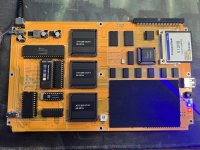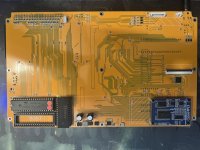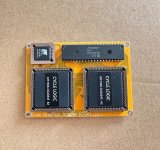I suppose that for testing purposes, the ideal would be n0p's BIOS, with loading of extensions allowed but without XUB built into the flash file?@Betamax80 I am not closely familiar with the PicoMEM board.
Are you not seeing any PicoMEM BIOS output at all? Or you can't boot from it?
The 8088 BIOS searches the upper memory (D0000-F8000) for BIOS extensions in ascending order.
It might be possible that if you swap the addresses of XUB and PicoMEM BIOS extensions, you'll change the boot behavior, or at least the card initialization order.
Unfortunately, on pre-PnP systems, combining multiple bootable BIOS extensions doesn't always work. It really depends on the implementation of the particular BIOS extension.
For example, in most cases, bootable BIOS extensions will redirect the INT 19h (IPL - initial program loader) to themselves. So that, they can boot the system using the storage/network devices that they support.
Of course, there's only one INT 19h vector, so only one piece of code will get to handle it...
Depending on the implementation of that piece of code, it might boot from its own device right away, or offer some kind of mechanism to boot from other devices, which is done by saving the previous INT 19h vector, and calling that...
XUB, if I am not mistaken, completely replaces INT 19h with its own code, that offers boot from an HDD or a CF card, floppy drives, and serial port (if compiled/configured).
Same problem exists with INT 13h - disk services. But here, BIOSes typically will try to chain the interrupt call, that is if the particular disk number is not serviced by the given BIOS extension, it will be passed down the chain to the next (previous) INT 13h handler...
Unfortunately FreddyV has not yet released source to the ROM extension, and I maybe wrong but I don't see any hints.... it may well be that XTIDE is interfering with that PicoMEM is wanting to do.
The Github is here but all are binaries, I think. https://github.com/FreddyVRetro/ISA-PicoMEM/tree/main



